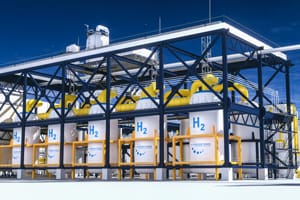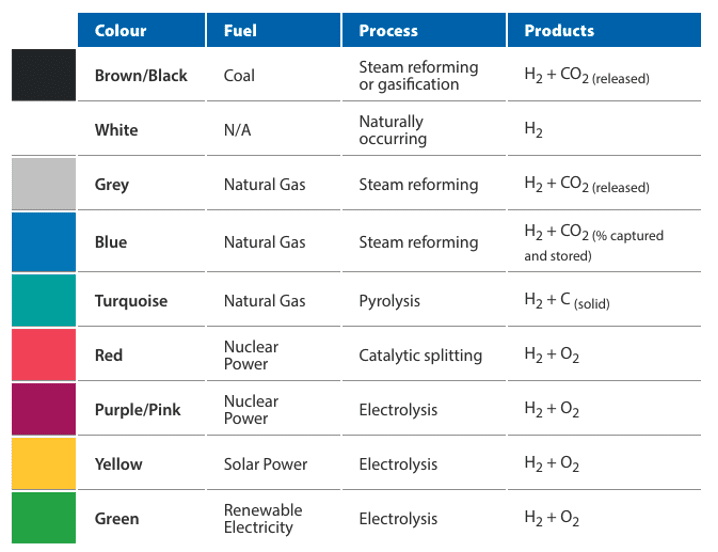Expanding energy-storage needs with hydrogen
The drive to reach the Paris Agreement targets by 2050 requires a variety of alternative fuel sources. There is growing interest in hydrogen as a viable fuel source. Many are calling for hydrogen to be part of future energy sources.
Note: The views expressed here are solely those of the author and/or interview subject and do not represent positions of IEEE.

For more than 100 years, the world has relied on fossil fuels to drive manufacturing, to provide light, and to heat or cool living environments. While these drivers have been fundamental to the development and advancement of humanity across the world, it has come with the hefty price of increasing the global temperature.
The drive to reach the Paris Agreement targets by 2050 requires a variety of alternative fuel sources. The best known of these are the big renewables: wind, solar, water, and nuclear. There is growing interest in hydrogen as a viable component to the future energy mix, particularly for certain industrial applications[ 1 ]. Many are calling for hydrogen[ 2 ] to be a part of future energy resources, one that reduces the reliance on fossil fuels[ 3 ]. Applications for the use of hydrogen include powering transport, metallurgy, and synthetic fertilizer production, all large contributors to global carbon emissions.
Josef Shaoul, member of the IEEE European Public Policy Committee Energy Working Group, points out the common mistake when hydrogen is referred to as an energy source. “Hydrogen is not a source of energy,” he says. “It can be used as a way to store energy, but it is currently used mainly as a feedstock to make the ammonia needed for fertilizer and in the petrochemical industry.”
Hydrogen fuel is produced through several methods including chemical, biological, electrolytic, photolytic, and thermo-chemical processes. Each process requires a great deal of energy to separate the hydrogen from the oxygen (in a water molecule), at temperatures reaching more than 1,0000 C, which is a major drawback. Research is ongoing to develop technologies for producing hydrogen, at scale, from renewable resources with minimal environmental impacts.[ 4 ]
The demand for hydrogen is expected to expand in the coming years. Investment banker Morgan Stanley reckons that if governments take their green commitments seriously, today’s market could increase more than five-fold to over 500m tonnes by 2050 as these new applications grow. And it has to become clean, cutting its carbon-dioxide emissions to zero.[ 5 ]
Hydrogen, an odorless, colorless, tasteless gas, is the most abundant element on the planet, constituting about 75% of normal matter. It is mostly found on Earth in molecular form combined with other atoms, such as water (H2O) and organic compounds. Because it is highly reactive, there is almost no pure hydrogen on Earth.[ 6 ]
To help differentiate the variety of methods of hydrogen production, a rainbow of colors has been adopted as noted below.

Source: https://hydrolux.ca/en/50-shades-of-hydrogen/
As hydrogen gains relevance in the global energy transformation away from fossil fuels to a net-zero emissions state by 2050, more research is being focused on how to improve the processes that derive the cleanest hydrogen, while also determining best-use-case applications. According to IEEE’s European Public Policy Committee (EPPC) Energy Working Group, the most important application for hydrogen in the near term is the replacement of current grey hydrogen to remove its associated carbon emissions. Grey hydrogen is used primarily as a feedstock to produce ammonia used in fertilizer applications.
Hydrogen has been studied for years as an energy-storage medium. Indeed, hydrogen fuel cells are used today to power vehicles, with the byproduct being plain water. To date, generating any hydrogen other than grey, brown, or black hydrogen has been prohibitively expensive and difficult to produce, which is why currently about 95% of hydrogen is produced from fossil fuels. While a promising technology and energy-storage solution, the challenge has been how to generate, store, and transport enough hydrogen at scale to be useful for industrial applications to realize the hydrogen economy.
[1] ieeexplore.ieee.org. (n.d.). Alternative Fuels—The Future of Hydrogen | River Publishers eBooks | IEEE Xplore®. [online] Available at: https://ieeexplore.ieee.org/book/9536783
[2] The Economist. (2021). Creating the new hydrogen economy is a massive undertaking. [online] Available at: https://www.economist.com/briefing/2021/10/09/creating-the-new-hydrogen-economy-is-a-massive-undertaking
[3] Smitkova, M.F., Janicek, F. and Martins, F. (2022). Hydrogen Economy : Brief Sumarization of Hydrogen Economy. [online] IEEE Xplore. Available at: https://ieeexplore.ieee.org/document/9872907
[4] Energy.gov. (2019). DOE Hydrogen and Fuel Cells Program: Hydrogen Production. [online] Available at: https://www.hydrogen.energy.gov/production.html
[5] The Economist. (2021). Creating the new hydrogen economy is a massive undertaking. [online] Available at: https://www.economist.com/briefing/2021/10/09/creating-the-new-hydrogen-economy-is-a-massive-undertaking
[6] Nightingale, S. (2019). Why Haven’t Hydrogen-powered Cars Gone Mainstream? [online] USC News. Available at: https://news.usc.edu/trojan-family/why-hydrogen-fuel-isnt-mainstream-as-fossil-fuel-alternative/



